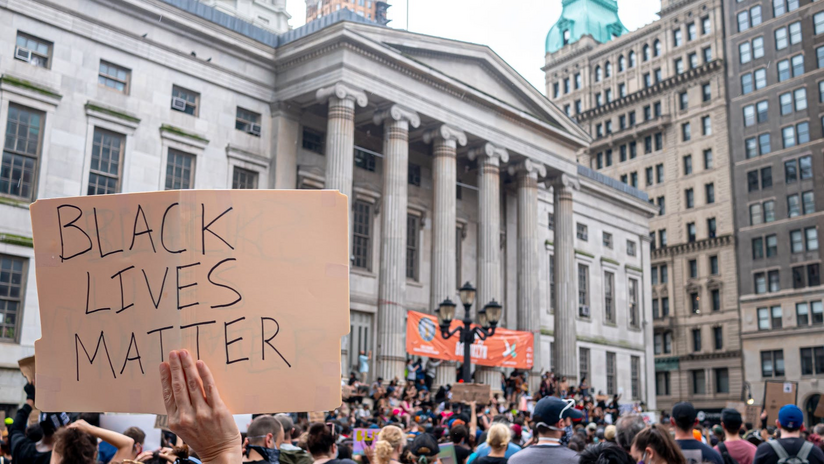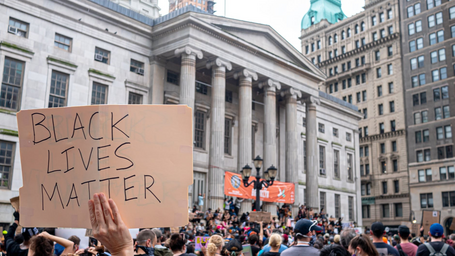Black Lives Matter Plaza in Washington, DC gained immense news attention as Mayor Bowser of DC renamed a section of 16th street to “Black Lives Matter Plaza” and endorsed the giant mural on the ground with yellow words that read “Black Lives Matter.” This plaza is a powerful symbol, especially as it is just a few steps from the White House; it is a reminder to Donald Trump that D.C. and this nation do not belong to him. For me, what makes this area even more powerful is the hundreds of protest signs along the fence that divides the plaza and the White House grounds. Signs with names of those who died from police brutality, quotes urging people to vote, and some blatantly bashing Donald Trump. This fence is extremely symbolic of the great divide between our current government and those in danger. However, to many this plaza is purely a symbol, and means nothing more than a PR stunt for the DC government and Mayor Bowser.

Despite the fact that the words “Black Lives Matter” are painted on a street in DC, to many the DC government has not shown that Black Lives do matter in this city. Brandi Thompson Summers, an assistant professor at UC Berkeley and former DC resident, stated to WAMU that the mural did not mean the city agreed with the sentiment they painted or actually followed through with it. Summers said “it just means you have to put up a picture to show that you acknowledge them, not that you welcome them and create conditions that allow them to stay”. Clearly, many feel that this mural truly did nothing in terms of progressing the BLM movement and although a nice gesture does not help Black lives around the country or even just DC. Black DC residents are still struggling, because besides these giant yellow words little has been done for them. With gentrification occurring throughout the city, pushing longtime residents out of their homes and eventually out of DC as a whole, what was once coined the “Chocolate City” is no more. Just driving into DC from my home in Maryland I can see the gentrification occurring throughout the city; with small businesses being replaced by “hipster” coffee shops and restaurants and luxury overpriced apartment buildings popping up everywhere. This issue causes displacement, which was found to be unique to DC. The Washington Post reported in 2019 that displacement of residents is a factor of gentrification that is only seen in DC and not common in other cities. In the Capitol Hill and Kingman Park neighborhoods, the Washington Post found in the census that “nearly 75% of low-income populations have vanished.” The displacement of residents does not just change the composition of the city, but also the city’s culture. A once vibrant Black city now is the spot where stores are told to lower their music, as shown in an electronics store in the Shaw neighborhood that was told to silence their iconic go-go music, which was once a pillar of the neighborhood’s culture. This is a symbol that shows how DC’s rich culture and history is rapidly being silenced, with the government doing little to fix this.

This issue is coupled with the fact that the DC government continues to increase the police budget, directly harming Black lives. Therefore, the fact that the words “Black Lives Matter” are painted on a street does not change much for black residents of DC. Therefore, the confusion and hesitation about this symbolic gesture is understandable. However, I cannot truly analyze this issue as I am a white woman who is not directly affected by it. For me to answer the question of whether or not Black Lives Matter Plaza is actually helpful or not to the Black community would not be right. As allies, white people have to remember not to speak for Black voices but to help amplify them. To help, allies can donate to important organizations for the BLM movement, educate themselves, and protest alongside the black Americans fighting for their own equality.
Photos: Her Campus Media



